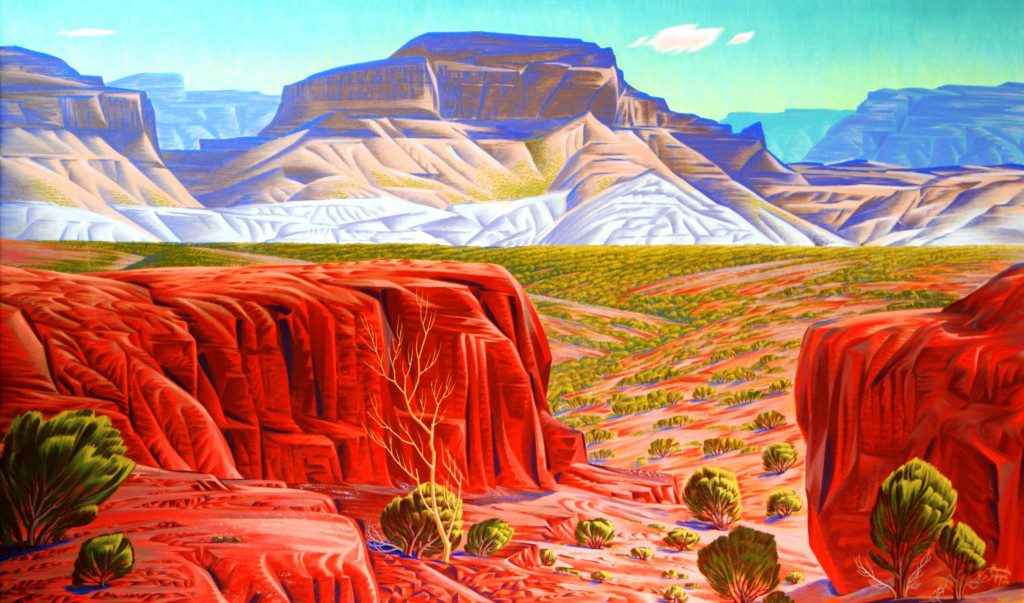
Opens Sunday, Aug. 24
Oklahoma no longer looks like the arid, over-plowed wasteland seen in photos from the 1930s. Photographers documented the Great Depression and Dust Bowl migration of Oklahomans and their neighbors as windstorms shoved mounds of dirt and sand through the cracks of abandoned houses and across barren fields. Artist Alexandre Hogue, too, saw this landscape and painted it as victim of human insatiability and greed. Hogue’s vision, however, exceeded his criticism – he painted in a new spirit with sensuously bowed lines, vivid colors and a scope for beauty. Gilcrease Museum brings the exhibition Alexandre Hogue: An American Visionary to its galleries, featuring the works that brought him his first wave of renown as well as art focused on the American southwest and other subjects. The exhibit opens Sunday, Aug. 24, and runs through Nov. 30. For more, visit www.gilcrease.utulsa.edu.






















